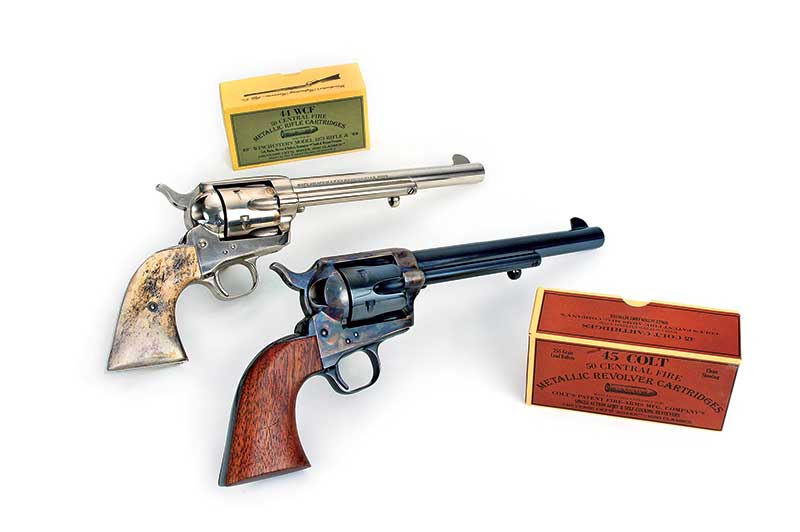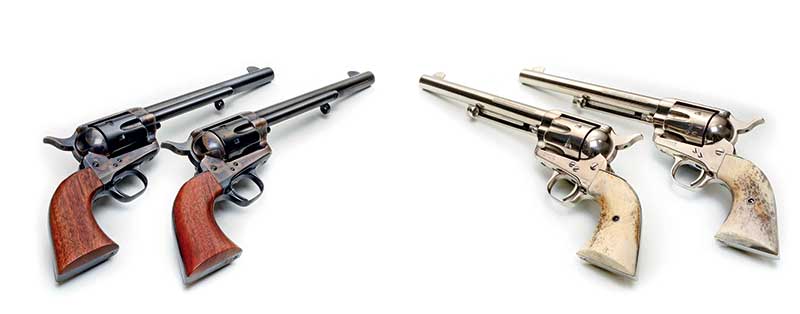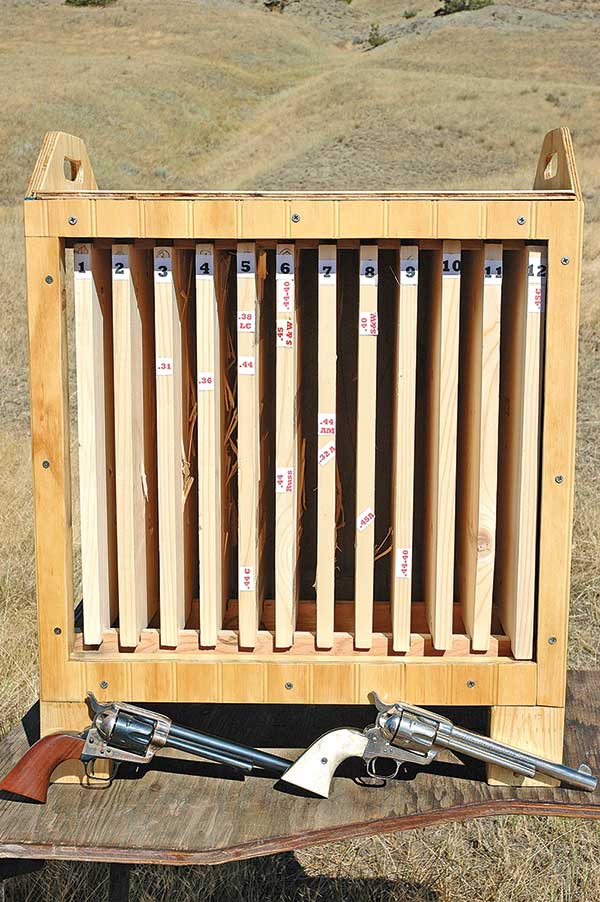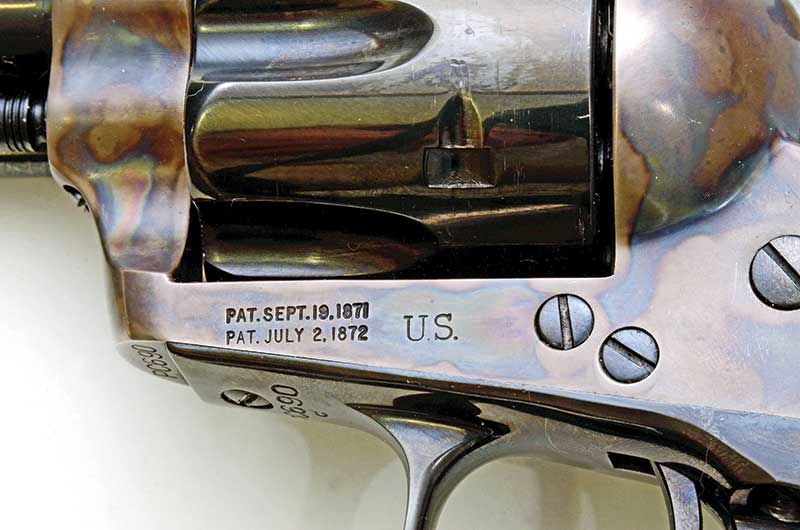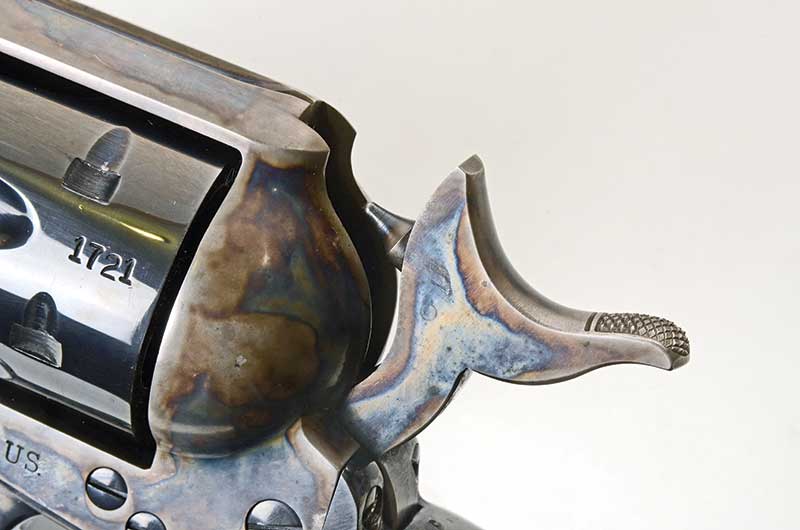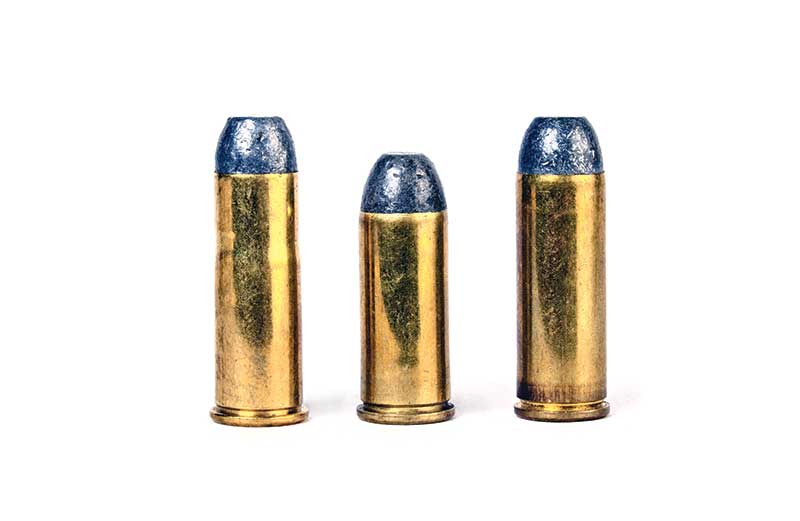The Peacemaker Centennials
Colt's Best Single Action Army Models
By the time this is printed I will have been shooting Colt SAA’s for 48 years. I’ve owned them in calibers from .32 to .45, in barrel lengths from 3″ to 12″ and finished as full nickel-plated, full-blue and blue with color case hardened frame. I’ve owned scores of SAA’s including ones from all generations, and fired many, many more.
Therefore it might seem ironic I consider the best ones ever made were commemoratives. Peacemaker Centennials to be exact and to me they are for shooting not looking at. These two versions of SAA’s were intended for celebrating 100 years of SAA’s (1873 to 1973) and they are so inscribed on one side or the other of their barrels. It should be mentioned, in Colt’s usual dilatory fashion they didn’t appear until 1975 although the firearms press had announced them sooner.
I fairly vibrated with that news because my greatest handgun desire then was a US Colt: meaning a .45 with 71/2″ barrel, 1-piece walnut grips, with color case-hardened frame and hammer and the remainder blued. It also needed a US stamped on the frame’s left side. Such was one half of the PC’s. The other half was a fully nickel-plated Frontier Six-Shooter (AKA .44-40) with hard-rubber grips. I was not so interested in those back then.
In the spring of 1975 I was in West Virginia visiting family. While there I made a side trip to Mack & Dave’s store in Huntington. It was where I hung out while attending Marshall University and I credit it with helping me keep at least part of my sanity during those stressful times.
Anyway, upon walking into the firearms department that day my eyes quickly found both .44 and .45 PC’s. I remember distinctly they were priced at $265.00. That was the good news — they actually existed. The bad news was I was no longer a West Virginia resident so I could not purchase handguns in that state.
Time Passes
Despite my avidness, it was 1993 before I became a Peacemaker Centennial owner and shooter. Along the line I must have mentioned in one or another article I always craved the .45 version because a fellow walked up to me at a Montana gun show and asked, “I understand you want one of these?” It was an unfired-in-the box .45 Colt PC.
I nabbed it! Right away I could see the factory grips had to go. They had a very authentic cartouche on the left side but they were thick enough to suit the Hulk’s hands. Cocking its hammer the first time proved these guns were intended for display and not for shooting. The Hulk would have had trouble getting the hammer back to full cock. Before ever trying to shoot my new .45 it was handed over to my local gunsmith, Tom Sargis (DBA Bozeman Trail Arms). He quickly fitted it with very nice walnut, 1-piece style grips and smoothed its innards so a Casper Milquetoast could cock its hammer.
That purchase must have opened my destiny’s floodgates. By the 1990’s I was more than interested in firearms made for .44-40 (also aka .44 WCF). There were numerous lever guns and sixguns so chambered in my safes. When visiting another local gunsmith he waved one of the nickel-plated PC’s under my nose and I fairly slapped him with the bucks. It was considerably more than Mack & Dave’s wanted back in ’75, by the way.
And here more of “Duke’s Luck” kicked in. Unbeknownst to me Colt had managed to get two heights of front sights on the .44-40 versions. One is too short although likely most similar to originals because early Colt single actions were known as “high-shooters.” My new .44-40 wore the other — taller — front sight. To my everlasting glee it allowed my new .44-40 to hit exactly to point of aim at about 25 yards.
Evidently I crowed about getting this .44 in an article because I received a message from an acquaintance in the cowboy action crowd. He was getting out of the game due to health concerns and wanted to sell his PC .44 and he was well aware of the front sight issue. His was the same height as mine.
More Duke Luck
After acquiring a brace of the .44 PC’s I met up with a gent who made some of the most unusual single action grips I’d ever encountered. They were crafted from bison bull thigh bone and I prevailed on him to make sets for both of my PC .44’s. (He no longer does it, so don’t ask.)
I wasn’t quite done yet. As I prepared to travel to a large cowboy action event in the year 2000 another gent contacted me. He had one of the .45 versions and from reading my articles knew I had a 19th century lever gun he wanted. We met at the cowboy match and the swap was completed. It went through the same Tom Sargis treatment as the first one.
When Colt announced the Peacemaker Centennials in the early 1970’s the figures for their production were as follows. There would be 1,500 of each, sold separately in their own distinctive presentation cases. Then there would be 500 of each offered as sets with presentation cases holding both. Modern sources say in the end Colt produced 2,002 of each version. I jokingly tell people, “I have the two, the other 2,000 are out there for you to find.”
Now, why do I consider these Colt PC’s as the best single actions ever made? One reason is they are crafted of modern steel so I don’t have to worry about smokeless powder handloads or modern factory ammunition doing damage to a valuable antique. The second major reason for my favoritism is their historical correctness. Colt reconstructed them nigh-on perfect to their originals of the 1870’s.
Important Details
The following are pertinent points: Main frames have a screw angling in from the front to secure the cylinder’s base pin. This is the misnamed “black powder frame” which Colt dropped in the 1890’s. Cylinder flutes have bevels at their ends which was a machining operation dropped somewhere along the way. The nickel-plated version even has a tiny 44 CF (centerfire) stamped into the left rear of the trigger guard and of course the etched Colt Frontier Six-Shooter panel on the barrel’s left side.
Until well into the 20th century Colt fitted their single actions with very narrow front sights and a corresponding narrow notch at the frame’s rear. Modern shooters sneer at such sights but I came to like them, even after my eyes aged. I even had special glasses made so I can still see them. Ejector rod buttons are the so-called Bullseye type, meaning round with a centered hole. Serial numbers are found on the frame, trigger guard and backstrap and a portion of it is on the cylinder. Speaking of serial numbers, the .45’s were marked PCXXX and the .44’s were stamped XXXPC.
Sometimes Colt, as a handgun manufacturer, gets as many things correct by accident as they do intentionally. With the PC’s they got one factor half right. It is common knowledge Colt’s .45 cylinder chamber mouths are excessively large. That is so with the .45 PC’s. Both of mine measure 0.456″ for six but barrel groove diameter is 0.45″. Where they got things right was with the .44’s. Barrel groove diameters are 0.427″ but chamber mouths are only 0.429″. The .45’s can be made to shoot very accurately with (1) hollowbase bullets or (2) with ones of an alloy no harder than 10 BHN. (1-20 tin to lead). The .44’s just plain shoot fine with most any load put through them.
Accurate, historical, attractive and strong enough for any standard .45 Colt or .44-40 ammunition; as far as Colt’s SAA’s go it doesn’t get better than the Peacemaker Centennials.

